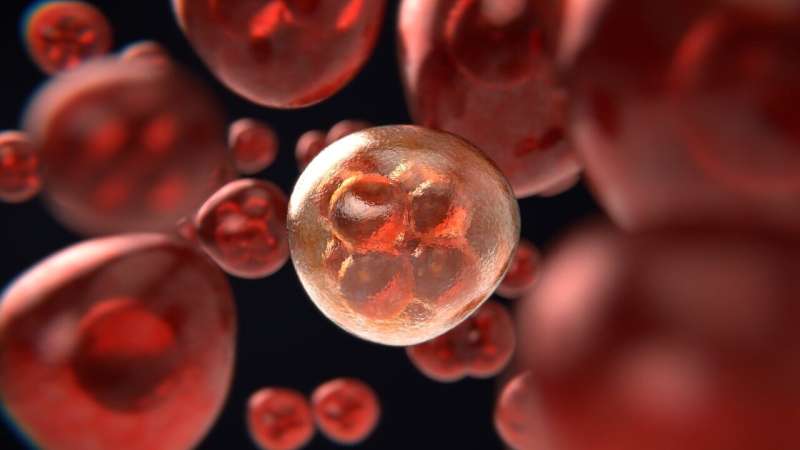Home »
Scientists discover molecule that kills pancreatic cancer cells

A research team led by scientists at Roswell Park Comprehensive Cancer Center has discovered a molecule that inhibits the growth and metastasis of pancreatic cancer cells through the iron metabolism pathway. Their findings, recently published in Molecular Cancer Therapeutics, pave the way toward the development of a new drug candidate for the treatment of pancreatic cancer.
The molecule, MMRi62, targets iron metabolism to kill cancer cells and the harmful proteins that encourage their growth and spread, suggesting that further development and refinement of this compound could lead to a new type of pancreatic cancer therapy.
“MMRi62 causes degradation of an iron-storage protein called FTH1, as well as a protein that is mutated in PDAC, resulting [in] inhibition of metastasis and ferroptosis, a form of cell death triggered by free cellular iron,” says Xinjiang Wang, Ph.D., Associate Professor in the Department of Pharmacology and Therapeutics at Roswell Park.
Pancreatic ductal adenocarcinoma (PDAC) cells are predisposed to ferroptosis, a recently identified type of cell death triggered by iron that has become a focal point of cancer research. The identification of novel agents that activate ferroptosis represents a new area of potential therapies for PDAC, an aggressive and largely incurable disease that accounts for 90% of all types of pancreatic cancer.
A unique feature of PDAC are mutations in the KRAS and TP53 genes, which drive the disease and make tumors resistant to chemotherapy. Because drugs and treatments targeting these mutations are not yet available, therapeutic options for patients with PDAC are limited, and the disease has a 5-year survival rate of only 12%.
“We showed through this study that in a preclinical model, MMRi62 is capable of inducing ferroptosis in PDAC cells harboring either KRAS or TP53 mutations, which in turn inhibited tumor growth and prevented metastasis of tumors to distant organs,” adds Dr. Wang.
Source: Read Full Article



